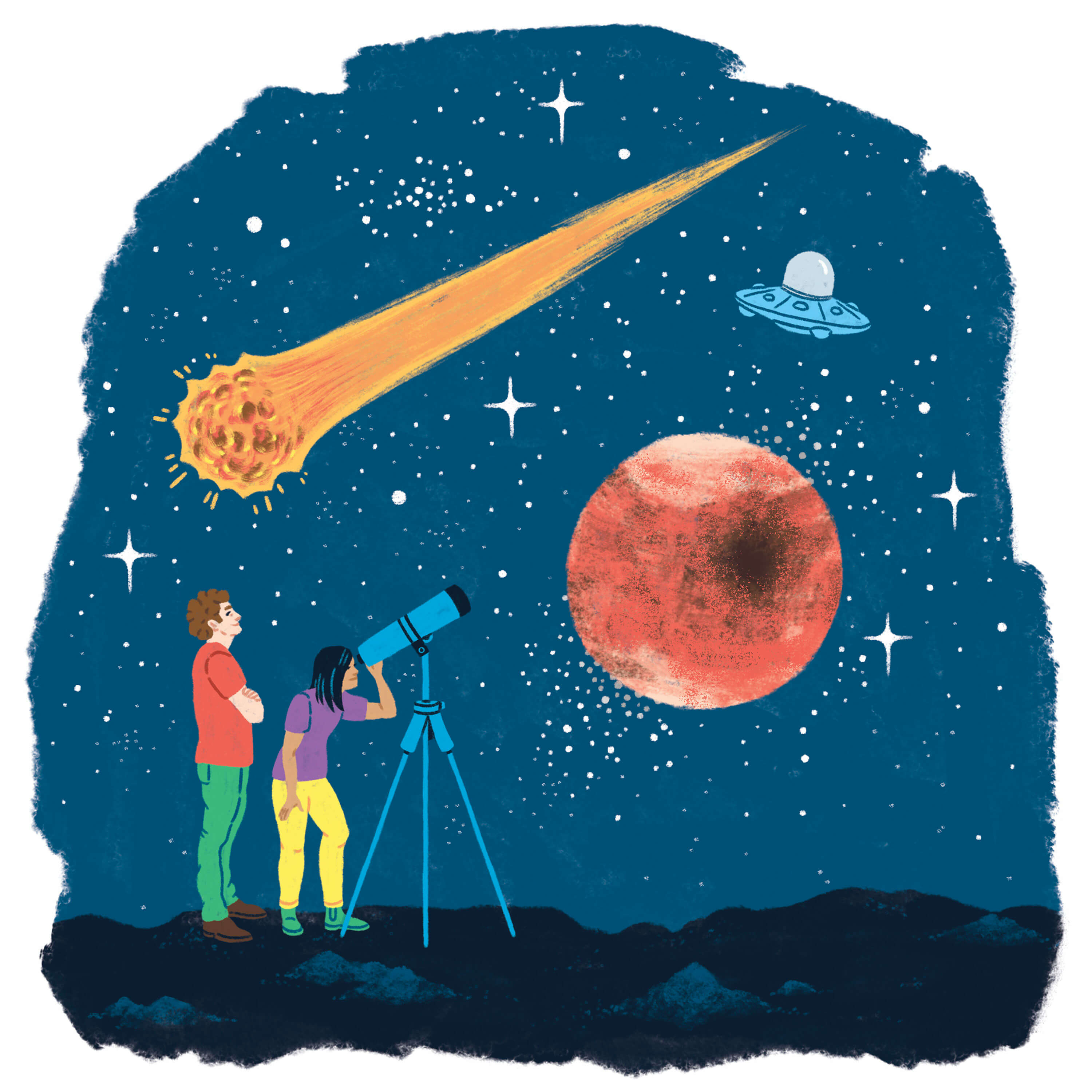
Skip The Fireworks
This summer, shooting stars—and Mars—will light up the sky.
The Perseid Meteor Shower is an annual affair, but this summer’s show should be particularly good thanks to a favorable moon phase.
We asked Monmouth astronomy professor Gloria Brown Simmons, who worked on the CASSINI, Magellan, Galileo, Voyager, and Viking missions, to explain the phenomenon.
What It Is
Every 133.28 years, Comet 109P/ Swift-Tuttle (C/109P) orbits the sun, leaving behind a debris trail of very small meteoroids, says Brown Simmons. It’s been doing so for at least thousands of years (the first recorded sighting was in 69 BCE). The comet’s orbit is stable, so the debris trail has essentially remained in the same location; that’s why the Perseids are an annual event. When Earth passes through this trail, meteoroids enter Earth’s atmosphere, becoming meteors and appearing as “shooting stars.”
What Your Seeing
Those “shooting stars” are actually ice and dust, entering the atmosphere at about 60 km per second, heating up to 2,000 to 6,000 degrees Kelvin, and burning out by the time they reach 80 km above the Earth, says Brown Simmons.
When and Where to Look
Earth will pass through the comet’s debris trail between mid-July and mid-August. If you’re in the northern hemisphere, the peak viewing time will be between 9:30 p.m. (EDT) on August 12 and 3:30 a.m. (EDT) on August 13. Look up, toward the northeast sky. The moon will be in a waxing crescent phase that night, which should make for excellent viewing conditions, says Brown Simmons.
The Best Way To Watch
There’s no need for binoculars or a telescope, says Brown Simmons. But you’ll want to get away from any light sources, so skip the beach (the boardwalk lights are too bright), head outside of any city centers, and find a nice open field with no trees.
What About Mars?
Brown Simmons says another interesting phenomenon stargazers should catch this summer is Mars in retrograde, when the planet will appear to move backward through the sky as the red planet approaches its September 2018 perihelion (the nearest it gets to the sun during its 1.8-year orbit).
Mars will be in opposition to Earth—meaning our planet will pass between the sun and Mars—on July 27. Unfortunately, a full moon that night will likely hamper viewing, she says. But don’t worry. The red planet will be one of the brighter objects in the night sky throughout the summer. So while you’re taking in the Perseid Meteor Shower, Brown Simmons says to turn around and look south. There, low in the sky, you’ll see Mars.